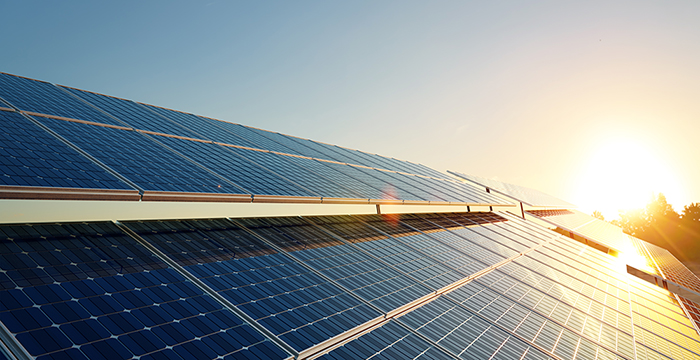
The energy of the sun's light may be directly transformed into electricity through the use of solar photovoltaic cells, also known as photovoltaic cells. Solar cells are combined in specific ways to form photovoltaic modules, which are designed to meet certain application requirements in terms of rated output power and output voltage. The array sizes that make up the solar module can vary widely, depending on the dimensions of the photovoltaic power plant.
Advanced vacuum laminating and pulse welding processes guarantee a long service life for photovoltaic modules, which use high-efficiency mono crystalline or poly crystalline silicon photovoltaic cells, high-transmittance tempered glass, and a corrosion-resistant aluminium alloy frame, among other materials.
Can you tell me the many varieties of solar cells?

1. Homogeneous junction solar cells, heterogeneous junction solar cells, and Schottky solar cells are all possible classifications based on the structure.
2. Solar cells made of various materials may be categorised into many types, including silicon, organic compounds, plastic, sensitised nanocrystalline, inorganic compound semiconductor, and organic compound solar cells.
3. Can be categorised into conventional solar cells and excitonic solar cells based on the photoelectric conversion method.
According to the species categorization, there are four types of photovoltaic cells: amorphous silicon, polycrystalline silicon, copper indium selenide, gallium arsenide, and monocrystalline silicon.
Solar cells made on mono crystalline silicon
The most recent innovation in photovoltaic cell technology, monocrystalline silicon cells offer the best combination of size, efficiency, and longevity. The average conversion efficiency of monocrystalline silicon photovoltaic cells in China has achieved 16.5%, with a laboratory maximum efficiency exceeding 24.7%. The raw materials for these solar cells are typically silicon rods with a purity level of 99.9999% and a high degree of monocrystalline silicon.
Transparent silicon photovoltaic cells
One type of solar cell is the polycrystalline silicon photovoltaic cell. Manufacturing costs have been drastically cut as a result of the substitution of polycrystalline silicon material for the drawing process of monocrystalline silicon, which has drastically decreased production time. The reduced plane utilisation rate after PV module construction is due to the circular PV cells built from monocrystalline silicon rods and the fact that both the rods and the cells are cylindrical. There is a benefit to using polycrystalline silicon photovoltaic cells over using monocrystalline silicon ones.
Silica amorphous solar cells
A novel kind of thin-film cell manufactured from amorphous silicon is the amorphous silicon photovoltaic cell. A semiconductor with an amorphous crystal structure is known as amorphous silicon. It can produce solar cells with a thickness of just 1 micron, which is comparable to 300 nm monocrystalline silicon cells. Compared to polycrystalline and monocrystalline silicon, it has a considerably simpler production method, uses less silicon material, and has a substantially lower power consumption per unit.
Photovoltaic cells made of copper, indium, and selenide
The semiconductor film is applied on glass or other cheap substrates to create copper-indium-selenium solar cells. The main ingredients used are compound semiconductors of copper, indium, and selenium. Film thickness of just approximately l/100 is required for monocrystalline silicon photovoltaic cells because of the excellent light absorption capability of copper indium selenium batteries.
Solar Cells Based on Gallium Arsenide
An innovative thin film battery material, amorphous silicon photovoltaic cells use amorphous silicon as its primary building block. A semiconductor with an amorphous crystal structure is known as amorphous silicon. It can produce solar cells with a thickness of just 1 micron, which is comparable to 300 nm monocrystalline silicon cells. There is a significant reduction in unit power consumption and a simplification of the production process as compared to alternatives using polycrystalline or monocrystalline silicon.
Photovoltaic polymer cells
An analogous multilayer composite to an inorganic P-N junction unidirectional conducting device, a polymer photovoltaic cell employs redox polymers with varying redox potentials.
The pros and cons of using photovoltaic cells
The benefits: There is no risk of depletion, it is essentially non-polluting, it is not dependent on the geographical distribution of resources, it can be produced close to the power plant, it has high energy quality, its users are easy to accept emotionally, it provides energy for a short period of time, and the power supply system has a good track record of reliability.
Negative aspects: Aside from the high construction cost and tiny energy distribution density of irradiation, the four seasons, day/night, cloudy/sunny, and other climatic variables all have a role in the energy collected.







